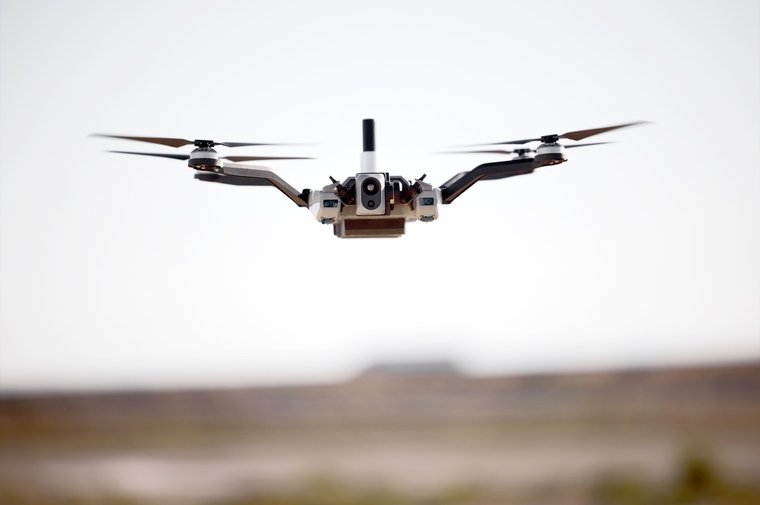
Palladyne AI and Red Cat to demonstrate capabilities for autonomous drone swarms to the US military
Palladyne AI and Red Cat to demonstrate capabilities for autonomous drone swarms to the US military
Details
More Products & Services
Products & Services
Defence Insight
Shephard Media
Some of the things people like you use Defence Insight for:
- Total addressable market sizing ($)
- Competitor analysis
- Cost analysis
- Market forecasting
- Growth identification
- Increasing closing ratio
- Increasing closing order value
- Estimating product potential
- Calculating sales forecasting
- Supply and demand analysis
- Total addressable market sizing ($)
- Competitor analysis
- Cost analysis
- Market forecasting
- Growth identification
- Increasing closing ratio
- Increasing closing order value
- Estimating product potential
- Calculating sales forecasting
- Supply and demand analysis
Military Unmanned Systems Handbook
Shephard Media
The Military Unmanned Systems Handbook (Digital Download) is an international guide to the military UV industry and provides detailed information on air, ground and sea (surface & sub-sea) vehicles as well as subsystems. What's included: Unencrypted 390+ page PDF of equipment and supplier information Market summary
Shephard Plus Update
Shephard Media
Shephard Plus is updating in June 2018 with rich new capabilities, and is now one of the most cost-effective and valuable aerospace and defence market intell...
Description
After announcing the completion of an autonomous, cross-platform collaborative flight involving three diverse heterogeneous drones, Palladyne AI, a developer of artificial intelligence (AI) solutions, and Red Cat, a supplier of UAVs, are preparing to demonstrate their capabilities to US military services.
It comprises the deployment of Red Cat and Teal drones fitted with Palladyne Pilot AI software. In this configuration, multiple drones can autonomously communicate and conduct ISR missions 'without any input from operators', Matt Vogt, Chief Revenue Officer of Palladyne AI, told Shephard.
Although he could not disclose details on what branch will be involved in the trials, Vogt pointed out that the two companies are currently 'in the final stages of integration activity' and plan to jointly show the 'suitability and availability' of their solutions to customers in the defence domain within the next six weeks.
Related Articles
What will future military drones look like?
Red Cat looks to partnerships to expand Teal 2's wings
Red Cat to begin Black Widow sUAS production in early 2025
According to Palladyne AI, Pilot AI software has been designed to enhance the team's operational effectiveness and oversight of tactical UAV missions by enabling a network of collaborating drones and multi-modal sensors that self-orchestrate to provide capabilities for diverse applications.
'The idea is to enable the user, the operator, the warfighter to focus on their mission, while the software helps assist them in tracking objects of interest,' Vogt remarked.
The suppliers announced on 1 May their most recent demonstration with Teal 2 and Black Widow platforms. During the trial, the drones and Pilot AI software used onboard edge computing and constrained communication protocols without reliance on centralised infrastructure to communicate.
Together, the systems enabled real-time, distributed detection and tracking of multiple dynamic and static ground objects, including humans and vehicles, in different regions of interest.
'It really allows an individual to use a team of drones as a single team,' Vogt claimed.
In January, the two providers announced a two-drone flight operation after Palladyne AI conducted a single-drone testing in December 2024 to identify, prioritise and track terrestrial targets autonomously.
Shephard Defence Insight noted that Teal 2 is a micro UAV equipped with Teledyne FLIR's Hadron 640R sensor and optimised for nighttime operations. Meanwhile, Black Widow is a rotary-wing micro drone engineered for ISR tasks.
Stan Nowak, VP of Marketing of Red Cat, stressed that the company has been focusing on the development of UAVs in 'a flying cell phone model'.
Both Teal 2 and Black Widow platforms have been involved in tranches of the US Army's Short Range Reconnaissance (SRR) effort. The Teal 2 is also in service with the security forces of the US Air Force and is deployed defending air bases and other installations.
Related Programmes in Defence Insight
UAS: flight control systems | Short Range Reconnaissance (SRR) (Tranche 2) / Rucksack Portable UAS (RPUAS) [USA]
Related Equipment in Defence Insight
Teal 2
Black Widow
It comprises the deployment of Red Cat and Teal drones fitted with Palladyne Pilot AI software. In this configuration, multiple drones can autonomously communicate and conduct ISR missions 'without any input from operators', Matt Vogt, Chief Revenue Officer of Palladyne AI, told Shephard.
Although he could not disclose details on what branch will be involved in the trials, Vogt pointed out that the two companies are currently 'in the final stages of integration activity' and plan to jointly show the 'suitability and availability' of their solutions to customers in the defence domain within the next six weeks.
Related Articles
What will future military drones look like?
Red Cat looks to partnerships to expand Teal 2's wings
Red Cat to begin Black Widow sUAS production in early 2025
According to Palladyne AI, Pilot AI software has been designed to enhance the team's operational effectiveness and oversight of tactical UAV missions by enabling a network of collaborating drones and multi-modal sensors that self-orchestrate to provide capabilities for diverse applications.
'The idea is to enable the user, the operator, the warfighter to focus on their mission, while the software helps assist them in tracking objects of interest,' Vogt remarked.
The suppliers announced on 1 May their most recent demonstration with Teal 2 and Black Widow platforms. During the trial, the drones and Pilot AI software used onboard edge computing and constrained communication protocols without reliance on centralised infrastructure to communicate.
Together, the systems enabled real-time, distributed detection and tracking of multiple dynamic and static ground objects, including humans and vehicles, in different regions of interest.
'It really allows an individual to use a team of drones as a single team,' Vogt claimed.
In January, the two providers announced a two-drone flight operation after Palladyne AI conducted a single-drone testing in December 2024 to identify, prioritise and track terrestrial targets autonomously.
Shephard Defence Insight noted that Teal 2 is a micro UAV equipped with Teledyne FLIR's Hadron 640R sensor and optimised for nighttime operations. Meanwhile, Black Widow is a rotary-wing micro drone engineered for ISR tasks.
Stan Nowak, VP of Marketing of Red Cat, stressed that the company has been focusing on the development of UAVs in 'a flying cell phone model'.
Both Teal 2 and Black Widow platforms have been involved in tranches of the US Army's Short Range Reconnaissance (SRR) effort. The Teal 2 is also in service with the security forces of the US Air Force and is deployed defending air bases and other installations.
Related Programmes in Defence Insight
UAS: flight control systems | Short Range Reconnaissance (SRR) (Tranche 2) / Rucksack Portable UAS (RPUAS) [USA]
Related Equipment in Defence Insight
Teal 2
Black Widow

Share
Recent Chats
Share via email
Future: handle WhatsApp here
Future: handle LinkedIn here
Future: handle Twitter here
SUBMENU HERE
Share via Chat
Copy Link


